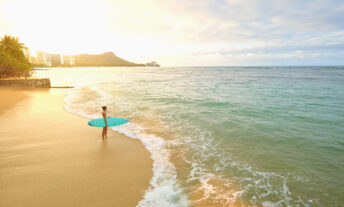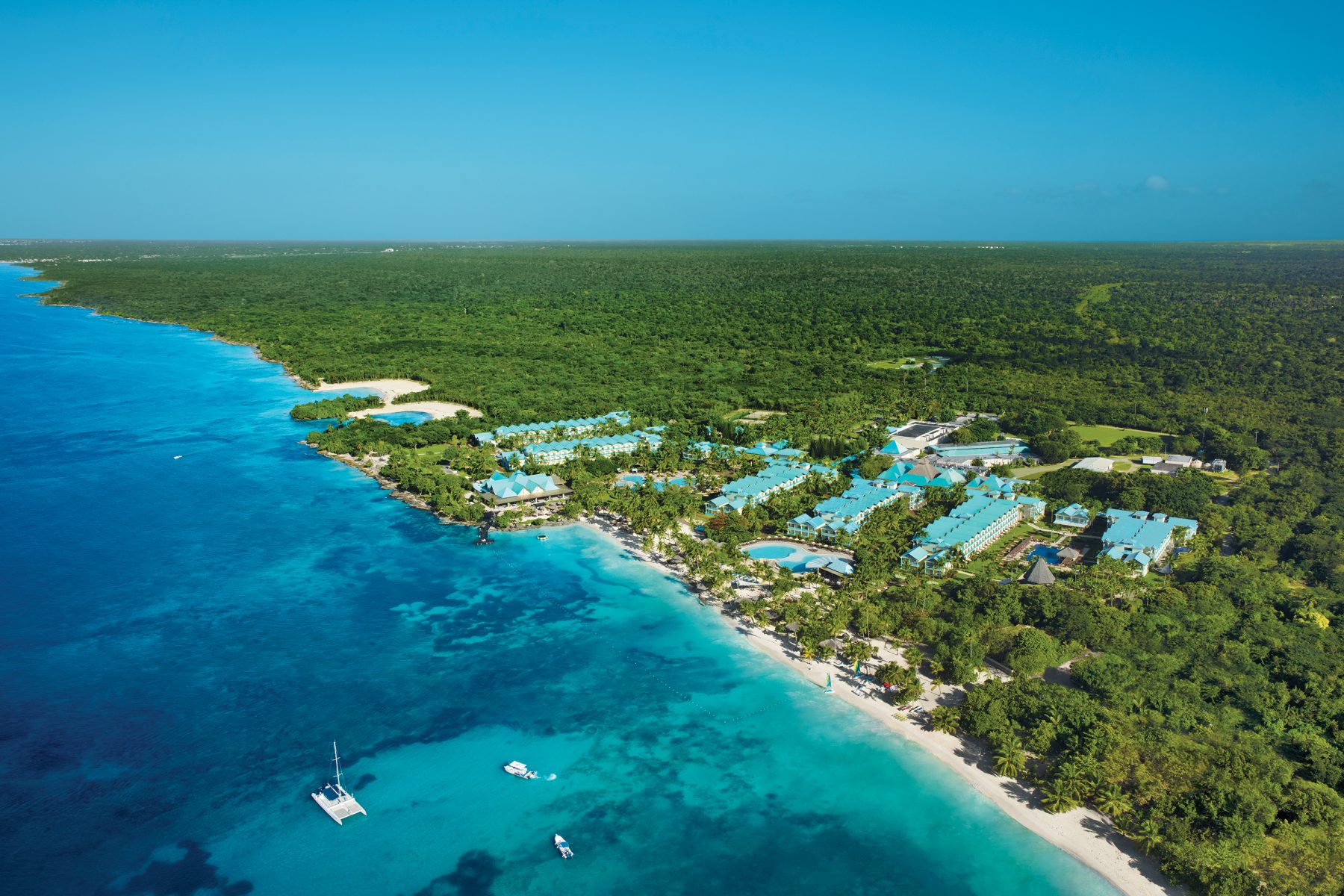Backpacker’s guide to traveling on a budget
Signing up for credit cards through partner links earns us a commission. Terms apply to the offers listed on this page. Here’s our full advertising policy: How we make money.
Update: One or more card offers in this post are no longer available. Check our Hot Deals for the latest offers.
Vacation and adventure are often at opposite ends of the travel spectrum. Luxury resorts and guided tours aren’t the best ways to open your mind to new cultures. So if you’re the kind of traveler that isn’t into five-star hotels and business class flights, I totally get it.
Backpacking gives you a unique lens along your travels. It’s a full-immersion experience, both inconvenient and rewarding.
Believe it or not, there’s still an advantage to collecting miles and points in the backpacker budget world. Travel credit cards can assist you along your trek in more ways than you think.
Backpacker checklist: What to bring
After your first backpacking trip, your backpack strategy may change dramatically. You’ll find that whatever size backpack you choose, you’ll only want to carry around your essentials. In other words, don’t wear the most massive backpack you can find, because unnecessary items will inevitably make their way inside. After your first trip, pay close attention to each item you unpack, and analyze whether or not it was actually a necessity.
One key to maximizing your pack space is by matching clothes. Ensure that every single pair of pants you bring can be worn with every single shirt. Just a few of each and you’ve got a surprising number of variations for your journey.
Here are some common necessities for a backpacker on a budget:
- Watch with a compass
- Mini lock and key
- Thermos
- Sunglasses
- Multi-tool
- Silk travel sheet (for disgusting hostel beds)
- Emergency food, like oatmeal, dates, nut butter, etc.
- Toothpaste/toothbrush
- Laundry detergent sheets
- Liquid bandages
- Toilet paper
- Sterile wipes
- Aloe
- Lighter
Different ecosystems require different equipment for a backpacker, but these items are relevant no matter where you are.
Why backpackers need travel rewards cards
Credit cards are more secure than cash. Losing a credit card to theft or simple absent-mindedness is far less consequential than misplacing a wad of bills.
To be clear, you should absolutely carry cash with you — especially if you’re traveling in a place where card readers are a rarity — but you should use your card as often as you can. You’ll also find that it’s much simpler when crossing borders with different currencies.
Plus, you’ll earn rewards every time you swipe your card! Making purchases with cash will net you nothing.
Check out our post on the best no foreign transaction fee credit cards to see which is best for you. There are a few no-annual-fee cards that fit this bill, such as the Marriott Bonvoy Bold™ Credit Card and the Wells Fargo Propel American Express® card. You can bring these along without stressing about fees.
The Wells Fargo Propel card is no longer available for new applicants.
The information for the Wells Fargo Propel has been collected independently by Million Mile Secrets. The card details on this page have not been reviewed or provided by the card issuer.
How to pick the best backpacker travel credit card
There’s not a “best” travel credit card for all backpackers, as you’ll need to choose one that fits your particular goals.
We often tout the merits of the ongoing benefits of travel credit cards, such as trip delay insurance, rental car insurance, and other things you might not specifically need for your backpacking adventure. Here are some things to look for in a card.
Welcome bonuses
If you’re a backpacker, you’re probably quite skilled in the art of saving money. So what would you say to someone handing you hundreds and hundreds of dollars for free? That’s the power of travel credit cards.
One of the most important aspects of the miles and points hobby is earning valuable credit card intro offers. Some cards come with bonuses so big that you can redeem them for $1,000+ in CASH. You can read our post on the current best credit card offers to see if any strike your fancy.
Yes, some of these cards do come with an annual fee. But just subtract it from the total value you’ll be getting from the welcome bonus, and many still offer you $500+ in value.
Free transportation
Whether you’re backpacking domestically or internationally, you can get to your destination for free by collecting airline miles or flexible credit card points.
For example, if you desire to backpack across the Balkans, you can use a credit card that earns airline miles while you’re still at home to prepare for your trip. Collect enough miles (it’s unbelievably easy to do with the right airline credit cards), and you could book a free flight from your home airport to Croatia. The less money you spend reaching your destination, the more money you’ll have for your backpacking journey.
Best rewards credit cards for backpackers
If you’re ready to open your first backpacker credit card, here are a few recommendations:
- Sign up for Chase credit cards first, because Chase is often more restrictive than other banks due to Chase’s 5/24 rule and how they restrict new bonuses for some applicants who’ve recently applied for a lot of credit cards. Some of the best Chase credit cards are the Chase Sapphire Preferred Card and the Ink Business Preferred Credit Card. They both come with good bonuses worth $600 and $1,000 in cash, respectively (and WAY more than that if you know the best ways to use Chase points)
- The Wells Fargo Propel American Express® card carries no annual fee card, no foreign transaction fees and an extremely solid earning rate. It also comes with fantastic cell phone insurance as long as you pay your phone bill with the card. It’s one of the best international companions for a backpacker.
- Cards like the Capital One Venture Rewards Credit Card and Capital One VentureOne Rewards Credit Card earn rewards that you can use for just about anything travel related. If you book a night in a hostel, simply redeem your purchase with Capital One miles, and you’ll never have to pay the bill.
How to save when purchasing backpacking gear
There are a couple common-sense methods to saving big when looking for backpacking gear.
The first and hardest-to-swallow is that poorer-quality gear will really hurt your experience. If you can avoid getting sub-par stuff, do it. During a four-day hike in Peru, my husband found that the waterproof pants he got for a steal were in fact NOT waterproof — and barely water-resistant.
Buying high-quality gear second-hand is the way to go — Craigslist and eBay. They’re often a fraction of the price of the retailer’s blowout sale. Even if the items are slightly scuffed or damaged, you may be able to simply repair many things yourself while saving money on the overall cost.
Dream destinations for backpacking
Don’t let anyone tell you your dream backpacking trek. That’s for you to decide. A few crowd favorites, just for inspiration, are listed below:
- Vietnam — Like many countries in South East Asia, prices are dirt cheap the farther away you are from the coast. Rich cultures are super accessible thanks to the power of the U.S. dollar.
- Nepal — The hardcore among us may well have their eyes glued to the Himalayas. Nepal has 10 UNESCO world heritage sites, with seven of them being in Kathmandu Valley. That’s a great place to begin.
- Peru — Many great hikes, with two of the more famous ones ending at Machu Picchu — the Inca Trail and the Salkantay Trek. (The latter has been completed by two MMS team members and is highly recommended).
- New Zealand — No spiders, no snakes, no worries. New Zealand is one of the cleanest places on earth when it comes to creepy crawlies. My kind of place. Queenstown is a popular starting location.
- Indonesia — Islands like Bali and Sumatra have been romanticized through megaphones thanks to movies like Eat Pray Love. I’ve personally never been, but I plan to go soon before the luxury tourism industry eradicates culture.
- Bolivia — This is an extremely popular backpacking destination, thankfully with all the necessary hostel infrastructure. In an effort to see one of the biggest marvels on Earth’s surface, the natural mirror of Salar de Uyuni, you need to be the kind of traveler who has no real agenda. It’s never a guarantee.
Bottom line
As a backpacker, you probably expend energy to stay away from travel practices that quarantine you from local culture, such as expensive resorts or fancy rental cars. These are the kinds of experiences you can unlock with travel credit cards. But you can also harness their power to greatly improve your backpacking adventure.
When deciding which travel credit card(s) to open, find big welcome bonuses with points that you can redeem for at least 1 cent each in cash or towards travel. And only bring cards that waive foreign transaction fees.Are you a backpacker? Let us know of your personal tips to having a successful journey. And sign up for our newsletter to receive tips and tricks to earning and redeeming travel rewards delivered to your inbox once per day.
Editorial Note: We're the Million Mile Secrets team. And we're proud of our content, opinions and analysis, and of our reader's comments. These haven’t been reviewed, approved or endorsed by any of the airlines, hotels, or credit card issuers which we often write about. And that’s just how we like it! :)






Join the Discussion!